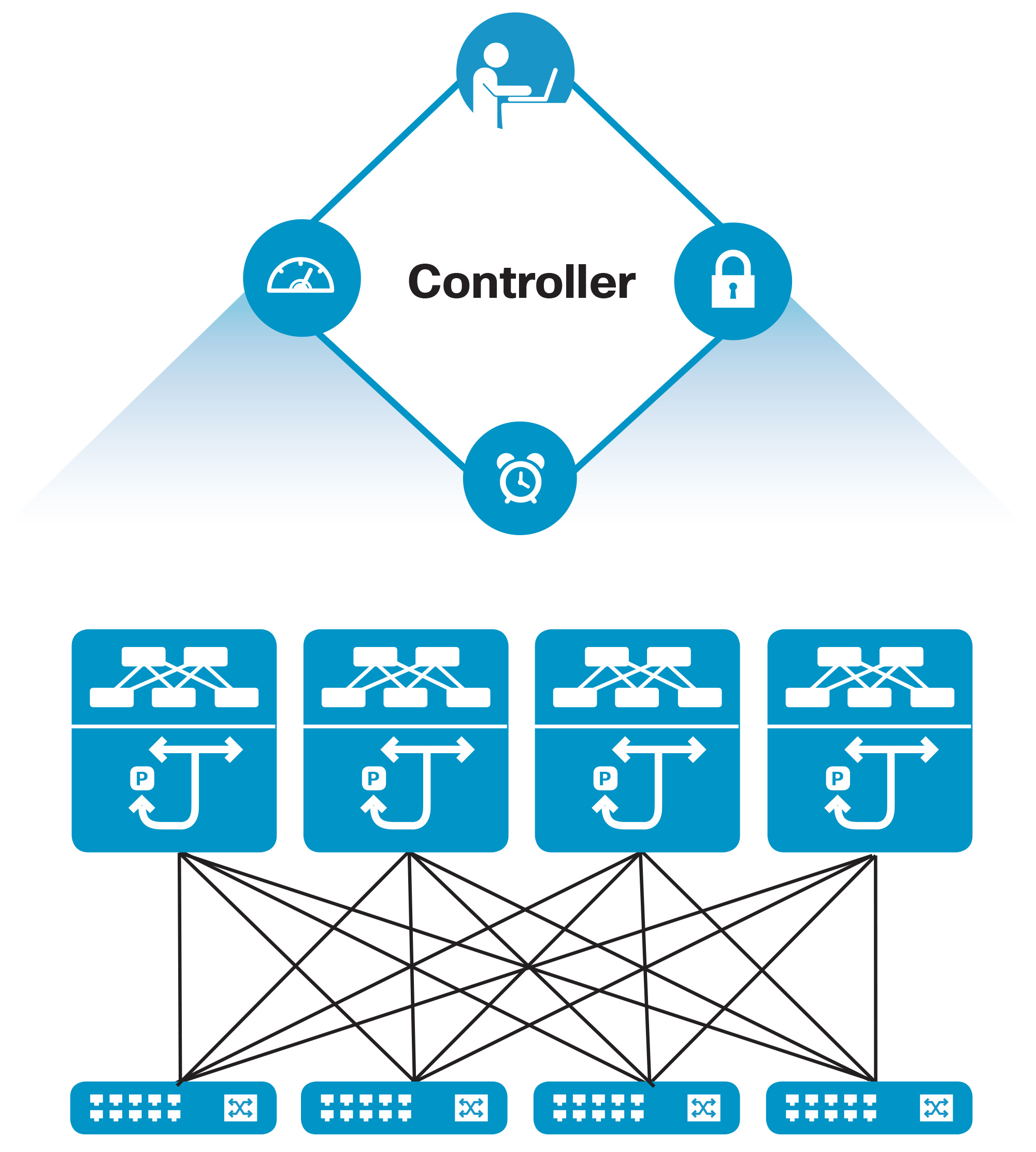The control layer resides above the device layer. Controllers are typically compute devices that:
- Provide network layer abstraction by hiding away details of individual devices and their connectivity. Applications communicate with this abstraction layer.
- Expose and use APIs in two directions. "Northbound" APIs are consumed by applications that need to use the controller's services; "southbound" APIs communicate with managed devices.
- Provide increased visibility through the capture, consolidation and correlation of data describing device-state and status, path and link characteristics, and many other types of information from southbound devices.
- Analyze and interpret data for consumption by northbound applications. Implement policy by accepting a policy definition, and manipulating the configuration of managed devices.
In general, controllers provide a increased level of visibility, intelligence, abstraction, and scope of influence than is possible at the device layer.

Controller Scope of Influence
Some examples of API-driven Cisco controllers include:
- APIC provides policy-driven management of data center network fabrics to streamline application deployment and security.
- Enterprise Controller extends policy-driven management capabilities to routers and switches throughout enterprise networks.
- Cisco Open SDN Controller provides a protocol conversion, network abstraction, and application delivery platform for Cisco and third-party developers.
- Mobility Services Engine enables the development of sophisticated, secure applications built around high-fidelity location tracking and analysis.